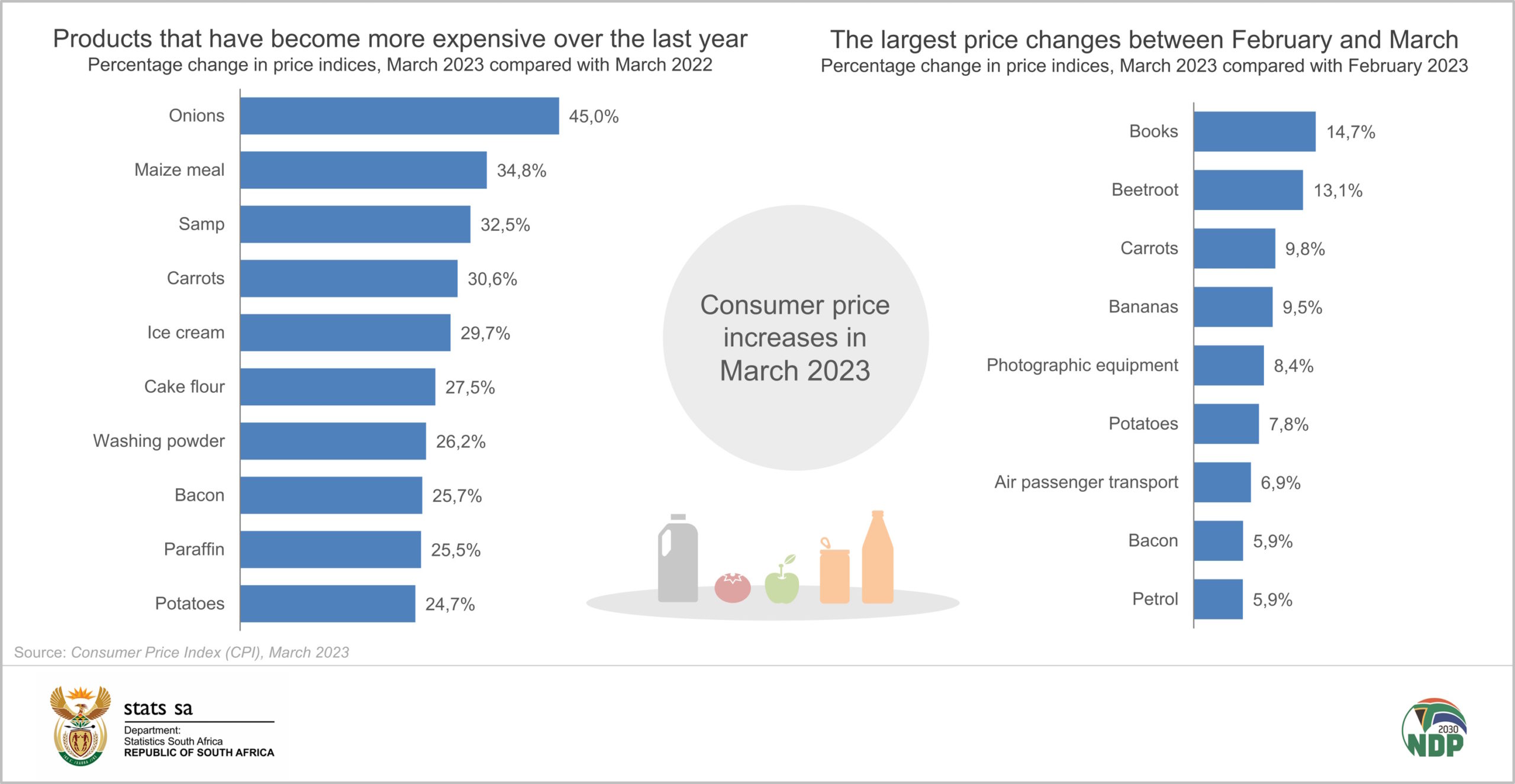Headline inflation for March surprised many, coming in at 7.1%, compared to the 7.0% in February, with food inflation coming in at 14%.
Many economists had expected inflation to decrease, especially seeing that the SA Reserve Bank has been aggressively targeting inflation by increasing the repo rate repeatedly over the past several months.
And while higher interest rates has hit the pockets hard of those with home loans and other debt, high inflation is even more damaging, almost literally eating away poorer people’s incomes.
ALSO READ: Inflation rises for a second consecutive month as food prices bite
This is especially reflected in food prices.
Inflation for food & non-alcoholic beverages continued to accelerate in March, with food prices on average 14% more expensive than a year ago.
It’s the largest annual increase in food prices since the 14,7% rise in March 2009 (14 years ago).
In March, milk, eggs & cheese; sugar, sweets & desserts; fruit and vegetables; and the product category ‘other food products’ experienced upward inflationary pressure.
The milk, eggs & cheese product group witnessed its annual rate reaching 13,6% from the recent low of 3,7% in April 2022.
The reading in March is the highest annual increase since February 2009’s print of 13,9%.
Bread & cereals, meat, oils & fats, and fish bucked the trend, recording slower growth. The annual increase for bread & cereals was 20,3% in March, down from 20,5% in February.
Meat inflation edged lower to 10,6% from 11,4% in February. Prices of oils & fats decreased for a seventh successive month, dragging the annual rate to 16,0% from 16,7%.
The chart below shows that onions are a whopping 45% more expensive than in March 2022, while maize meal, a staple in many families, is nearly 35% more expensive.





